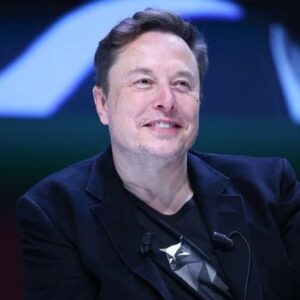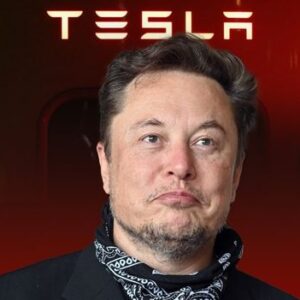we have written several articles covering the much anticipated release of Tesla’s affordable Model Y and less anticipated affordable Model 3. Zach noted that the range at 321 miles was surprisingly good but many were expecting a more aggressive price, since neither model was even as cheap as the premium version a week earlier (considering the $7,500 tax credit).

Earlier, he listed all the differences in the new Model Y and 3. The most surprising to me was the lack of standard Autosteer. Presently, you can’t upgrade to Autopilot or Enhanced Autopilot. You have to pay $8,000, or $99 a month, for FSD if you want anything more than Traffic Aware Cruise Control. Steve Hanley was the first to cover the new models and noted they were nothing really new, just rehashed versions of the existing cars.
My last article on the subject was a few days before the release, and I got a few things right (like that there would be a Model 3 and a Model Y and there would be a long range version of the affordable model), but I got more things wrong (like that it would start below $35,000 and there would be a lower range model).
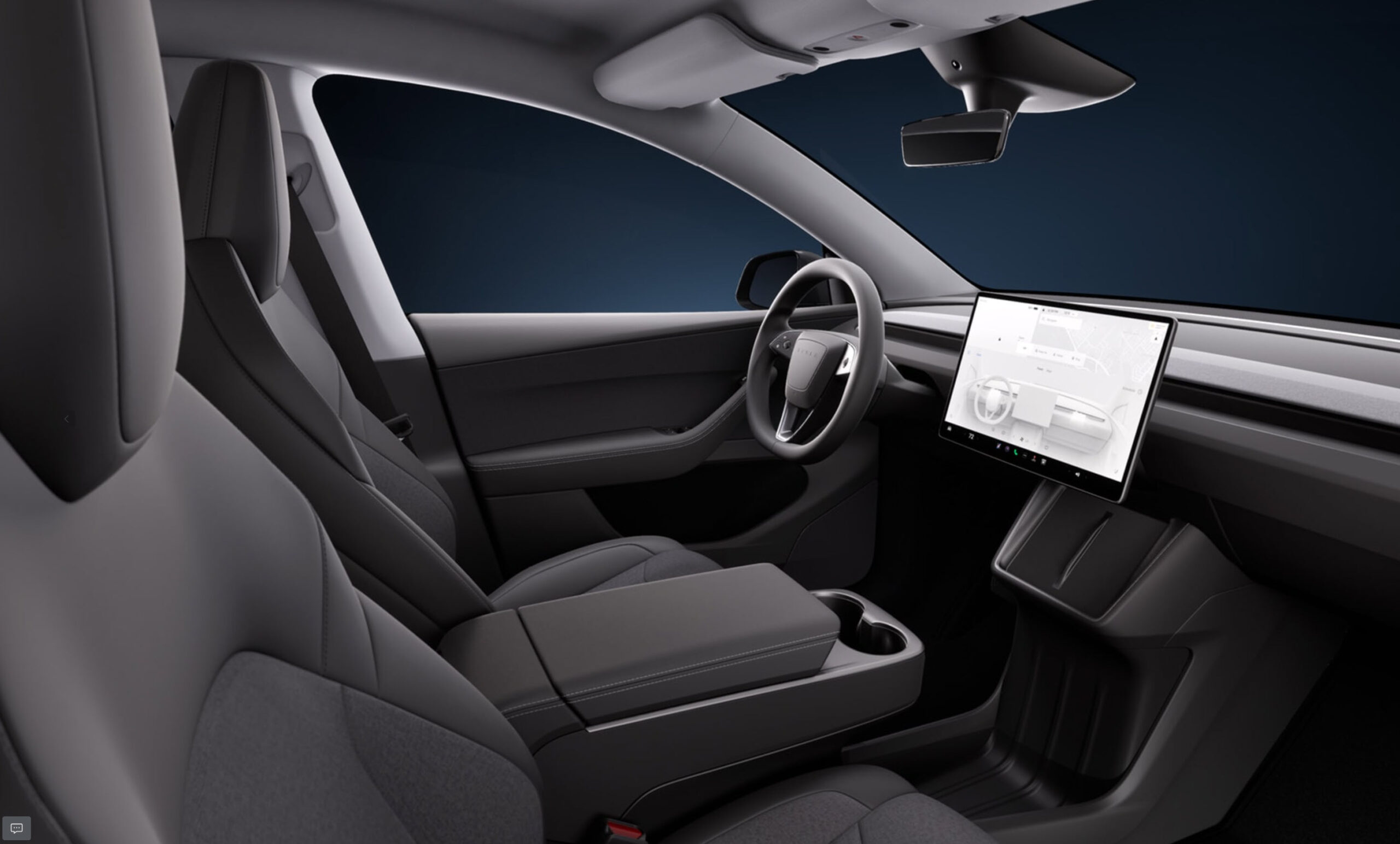
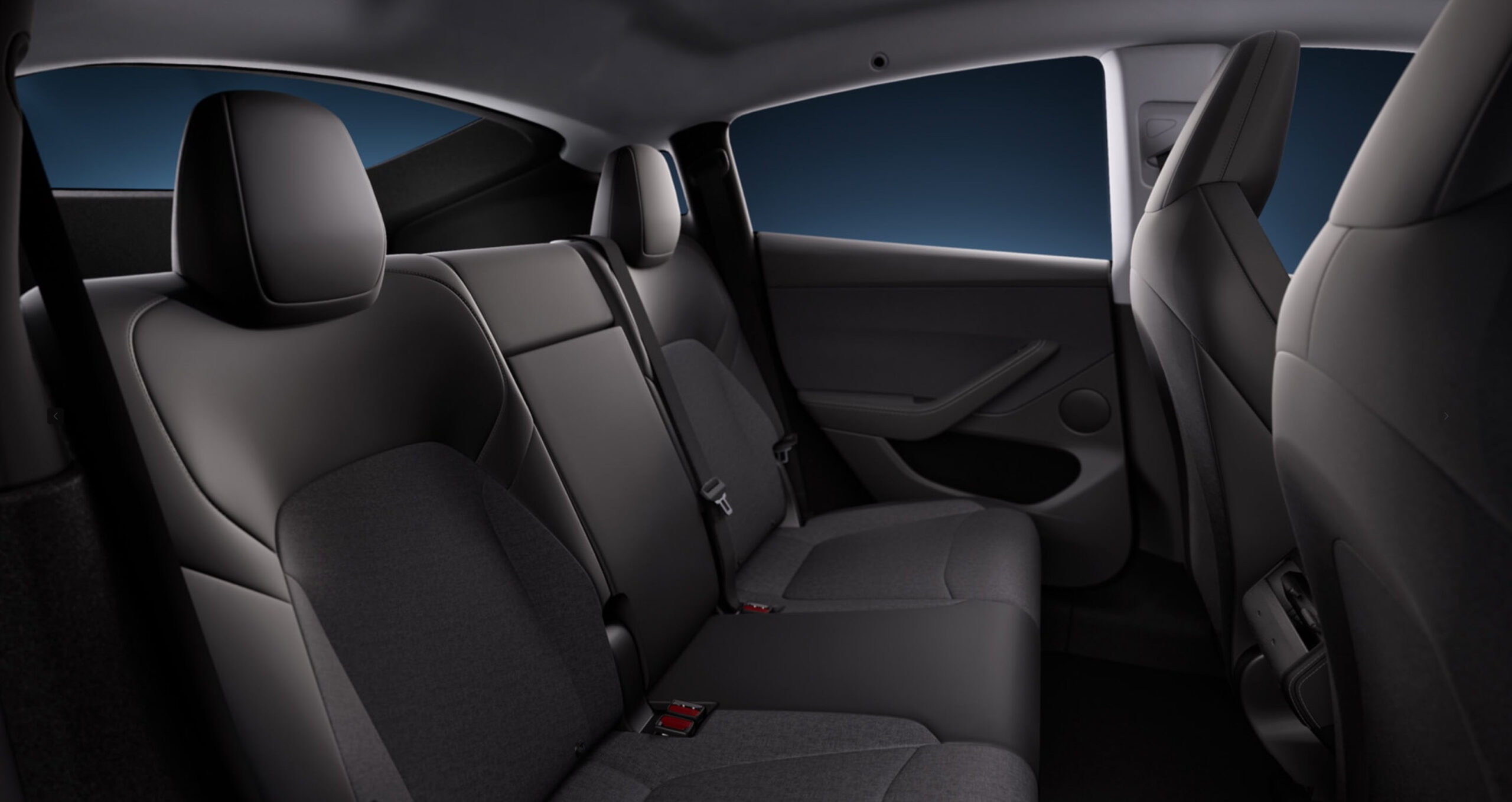
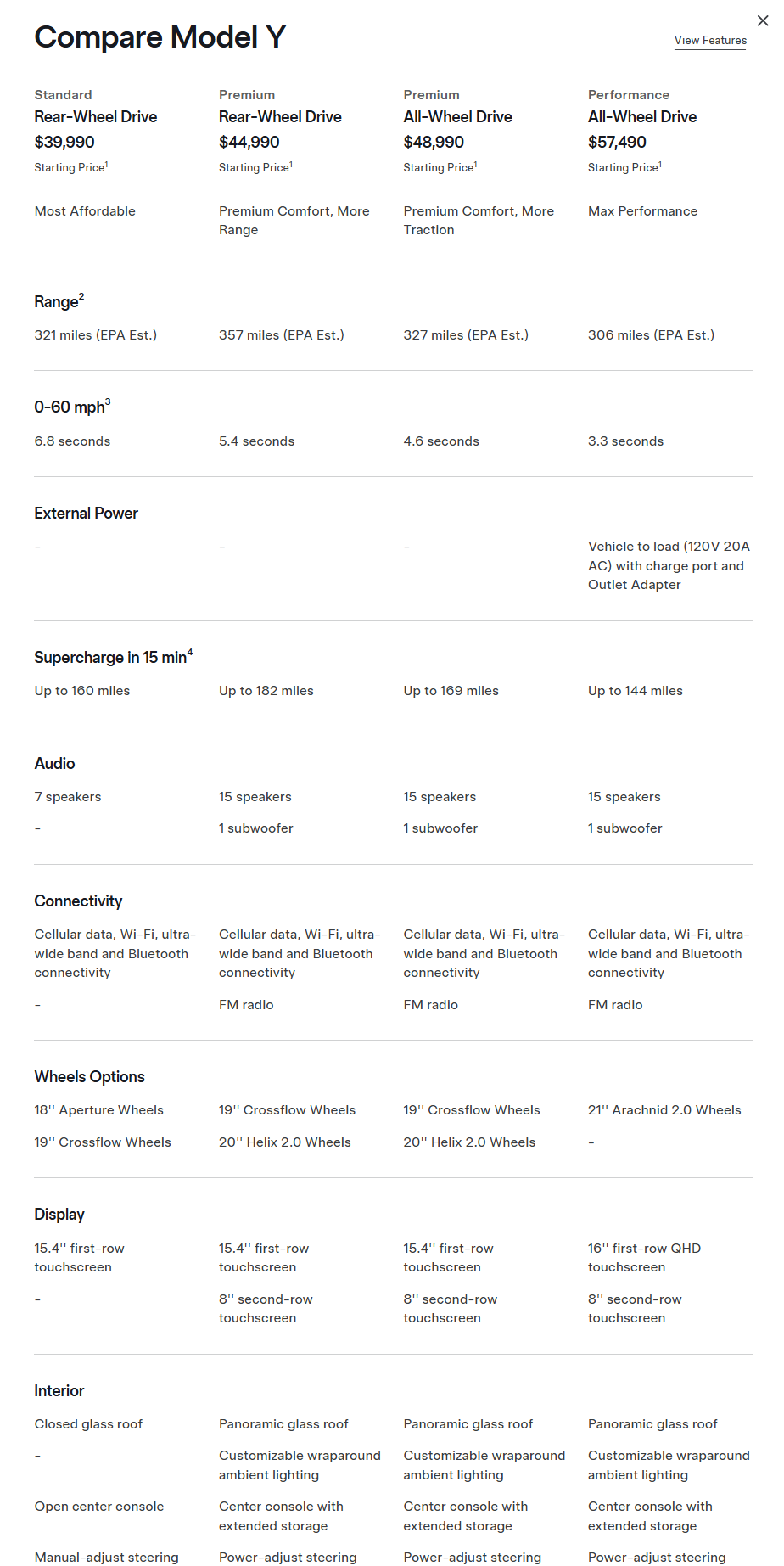
Before I get into what went wrong in the US, I should mention that Tesla announced the Standard Model Y (not the 3) in Europe yesterday and it was received much more favorably.
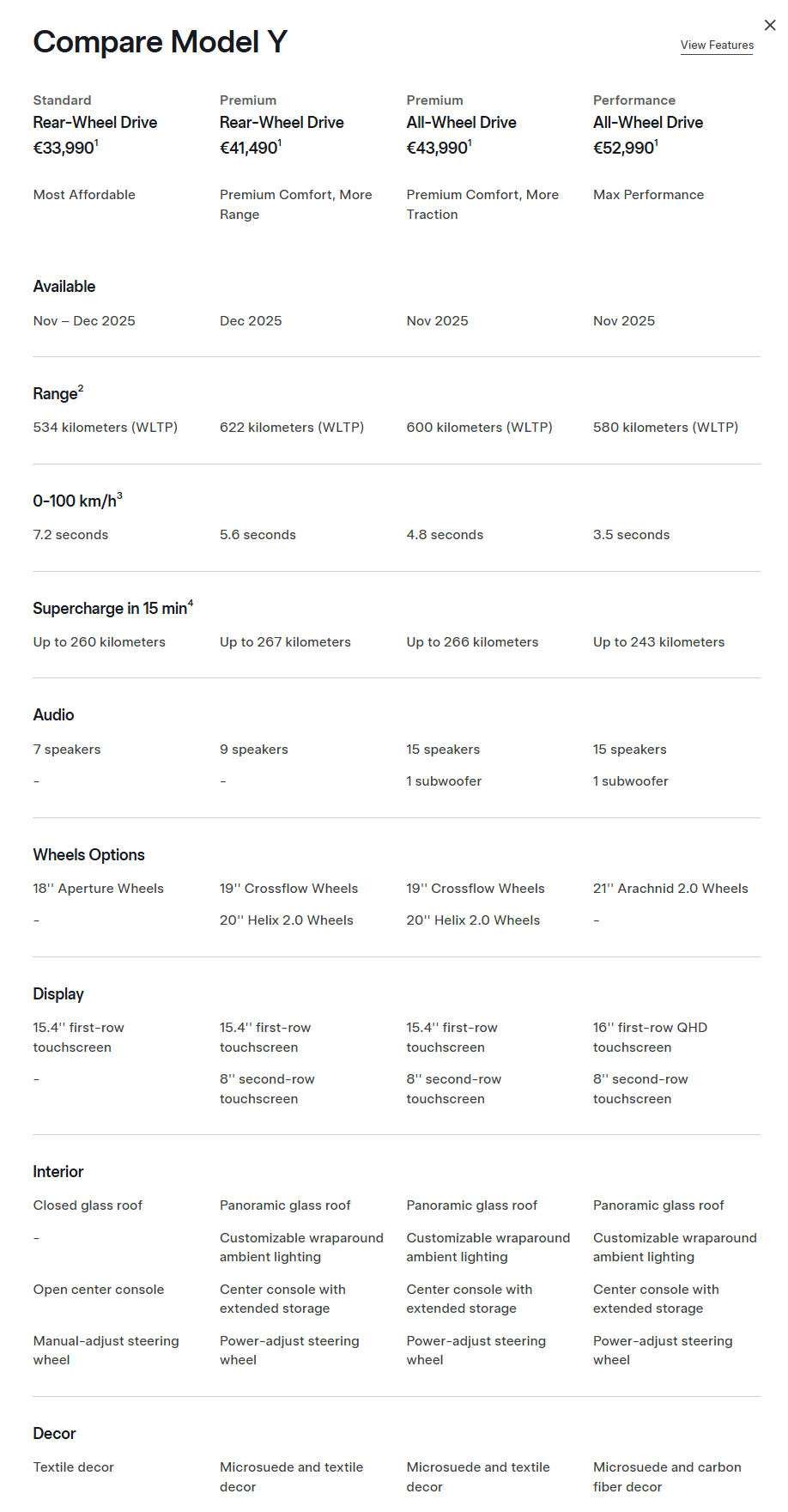
As you can see in the pictures above, the Model Y Standard offers prices cuts of 7,500 euros ($8,700) to 11,000 euros ($12,800) in other countries, compared to the Model Y Premium RWD. This is about twice the discount as in the US. It isn’t apples to apples, since the Standard offers 16% less range in Europe and 11% less range in the US, but 15 miles range isn’t worth $5,000 in anyone’s mind. Tesla discontinued its Standard Range RWD model in Europe that had 34 km less range but the premium interior. That version cost about 5,000 euros more.
The Model Y Standard in Europe also retains Autopilot. So in Europe it is a much happier change. People are getting a car with 34 more km of range and less premium interior for about $5,800 less than before. In the US, people are getting 36 miles less range, a less premium interior, losing Autopilot, and paying $2,500 more than a week earlier! So, in Europe, it could open up the market to people who wanted a Tesla but couldn’t afford one, but no such expansion is possible in the US at this time.
Speculation On Demand Levers Tesla Might Pull
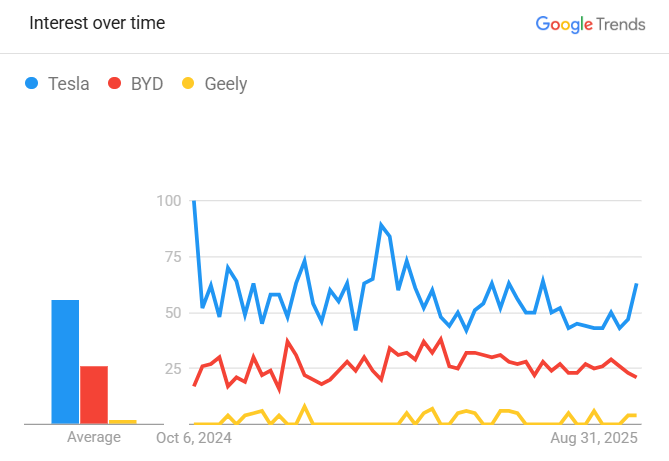
Tesla is doing quite well in China, with sales up 3% in September over a year ago on the strength of sales of their new larger 6-seat Model YL. As you can see above, search interest remains strong for Tesla in the ultra-competitive Chinese market. Sales of EVs are expected to be strong in China in the 4th quarter for two reasons.
- 4th quarter is traditionally the strongest quarter of the year, and looking at the 4th quarters of the last 2 years, a 30% increase in sales is likely over the strong 3rd quarter results.
- 2 different incentives are changing in China on January 1st, 2026 (unless they change the law, of course):
- The full purchase tax exemption goes from 100% to 50% on the standard 10% tax. This would have a 5% impact on the net cost of vehicles, but is capped at $2,100.
- There is a “cash for clunkers” style program that offers up to $2,700 subsidy for those scrapping an older vehicle and buying a new battery electric (BEV) or plug-in hybrid (PHEV).
I do think they will release something (maybe even a slightly smaller Model Y or a Model 3 hatchback) at a lower price in China in the first quarter so that sales don’t fall too much after the incentives end, but I haven’t really heard any details. If Tesla can get FSD enhancements approved by the government, that would help also.
In Europe, with the new Standard Model Y and the Performance Y both well received, they will do okay, but I hope they can start building the Model YL in Europe to further improve sales. If Tesla can get FSD enhancements approved by the government, that would help also, like in China.
But in the US, Tesla’s sales will drop a lot if they don’t do anything more. Sure, the Model Y Performance and the Model Y Standard and Model 3 Standard will bring in a few additional sales, and sure a few people put down a deposit of $250 before the end of the quarter, so they can still get the $7,500 on a car delivered in the 4th quarter.
My friend Dennis has discovered that you can still get a decent $6,500 lease incentive on many Tesla vehicles. The interest rates on the leases may not be great, but you can buy out the lease (and finance it with a 3rd party lender if needed), and after the fees, still save about $5,000. This could allow you to get the Model Y Premium or Model 3 Premium for about the same price as the standard models recently announced. I think the inventory discounts and the free options (like colors or wheels) are likely to be offered later in the 4th quarter.
Jo Bhakdi mentioned an interesting idea in a recent video where he speculated that Tesla could lower price for leases from $529 to $299 on the Model Y Standard. How could that be? How could they lower the lease price 44% when he was predicting only a 22% drop in the vehicle price (he was predicting a $34,990 price in this video)?
We could get some price adjustments as Tesla notices that people are not ordering the standard models at the rates expected. But the big speculation that Jo mentions in this video is that lower priced trims of models generally depreciate less. I checked this out by comparing the prices of a base and Limited RAV4 today and 3 years old. I found the base model kept 2% higher residual value than the Limited model. That validates Jo’s speculation, but Jo is proposing the affordable model would have an 8% higher residual value. I think that overstates it. So I don’t think we will get to $299 a month, but even down to $399 a month from $529 a month would be significant.

2026 Speculation
I suspect 4 chances to lower prices in 2026:
- As stated above for the China market, a smaller Y or 3 could be coming, but the better FSD does, the less likely this is to be released.
- LFP or even sodium batteries could come to more markets to lower costs.
- If the US Federal Reserve continues to lower interest rates, that will improve affordability for all autos slightly.
- Continuing cost optimizations and lower material costs (as, unfortunately, demand for electric vehicles is lowered in the US) will drop prices a bit.
Conclusion
As disappointing as the release of the Standard Model Y and 3 were in the US, an optimist like me can always find a silver lining, and in this article, I mentioned a few ways things could work out well. On the other hand, Tesla could has some ugly quarters while it develops its Full Self Driving and robot technology. Both of those could suffer delays causing pain to Tesla shareholders, since the stock has it priced in that they will make significant progress on at least self-driving (I’m not sure the stock has much priced in for robots yet).
